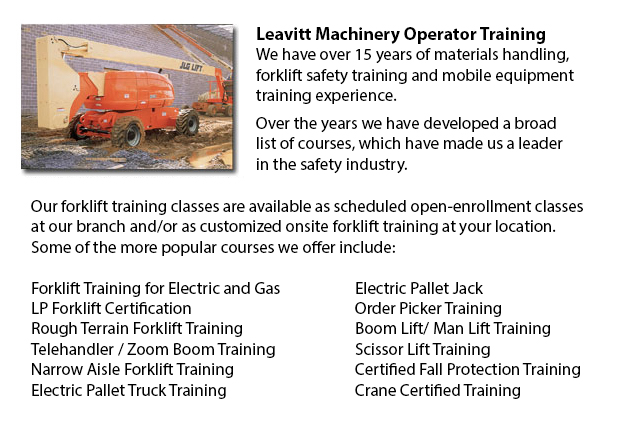
Ottawa Boom Lift Safey Training - Boom lifts are a kind of elevated work platform or aerial lifting device that are usually used in warehousing, construction and industry. Boom lifts could be made use of in virtually whichever environment due to their versatility.
The elevated work platform is utilized to allow access to heights which were otherwise not reachable using other means. There are dangers inherent when making use of a boom lift device. Workers who operate them have to be trained in the proper operating methods. Avoiding accidents is vital.
Boom Lift Training Programs include the safety factors involved in using boom lifts. The program is suitable for individuals who operate self-propelled elevated work platforms and self-propelled boom supported elevated work platforms. Upon successfully finishing the course, participants would be issued a certificate by a person who is licensed to confirm completing a hands-on assessment.
Industry agencies, local and federal regulators, and lift manufacturers all play a part in establishing standards and providing information in order to help train operators in the safe utilization of elevated work platforms. The most important ways in preventing accidents associated to the use of elevated work platforms are the following: inspecting equipment, wearing safety gear and performing site assessment.
Key safety factors when operating Boom lifts:
Operators need to observe the minimum safe approach distance (or also called MSAD) from power lines. Voltage can arc across the air to find an easy path to ground.
So as to maintain stability as the platform nears the ground, a telescopic boom needs to be retracted before lowering a work platform.
People working from the platform of a Boom lift should tie off so as to ensure their safety. Safety harness and lanyard combinations must not be connected to any anchorage other than that provided by the manufacturer, never to other poles or wires. Tying off may or may not be necessary in scissor lifts, which depends on particular job risks, local regulations, or employer guidelines.
Avoid working on a slope that goes beyond the maximum slope rating as specified by the manufacturer. If the slop goes beyond requirements, therefore the machine must be transported or winched over the slope. A grade can be measured without problems by laying a straight board or edge of at least 3 feet on the slope. Afterward a carpenter's level can be laid on the straight edge and the end raised until it is level. The per-cent slope is attained by measuring the distance to the ground (the rise) and dividing the rise by the length of the straight edge. Afterward multiply by 100.
-
Ottawa Boom Lift Ticket
Ottawa Boom Lift Ticket - Boom Lifts are a table lift piece of equipment which could be lifted or lowered to varying heights, making this apparatus a useful tool for many manufacturing purposes. There are some unique types of Boom Lift consisting of... More -
Ottawa Boom Lift Operator Training
Ottawa Boom Lift Operator Training - The cherry picker work platform is a kind of work platform, which will typically have a bucket or platform at the hydraulic lifting system's end. The device is also referred to as a man lift, boom lift, basket cra... More -
Aerial Lift / Boom Lift / Man Lift / Scissor Lift Training in Ottawa
Scissor lifts are forklift tables which raise objects and people and supplies vertically. They are normally utilized in industrial, construction and commercial environments. A common use of scissor lifts is for lifting or lowering construction suppli... More -
Ottawa Crane Certification
Ottawa Crane Certification - The Crane Certification training program covers content suggested by industry concerning the safe and efficient operation of cranes. Individuals training would know the following: pre-operational, operational and post ope... More -
Ottawa Heavy Equipment Training Courses
Ottawa Heavy Equipment Training Courses - The first step required to take when selecting heavy equipment operator courses is determining the capacity you wish to work with heavy machinery. Like for example, you can take courses that will teach you ho... More -
Ottawa Fall Protection Ticket
Ottawa Fall Protection Ticket - Fall-related accidents are the number one reason of death in the construction trade. The potential for fall accidents very much increases based on the kind of work which is being completed within your workplace. So, be... More -
Ottawa Telehandler Operator Training
Ottawa Telehandler Operator Training - Telescopic handler Forklifts or telehandler forklifts are common industrial machinery seen in various construction business settings. The telehandler is a useful machine and makes for a valuable tool that can be... More -
Fall Protection Training in Ottawa
Regrettably, there is a large number of workplace injuries linked to falling and lots of fall-related deaths reported each year. Lots of these instances might have been prevented by having proper measures in place, offering proper training and equipp... More

Forklift Certification Ottawa
TOLL FREE: 1-888-254-6157
Ottawa, Ontario
forkliftcertificationottawa.com
Email Us
About Us


